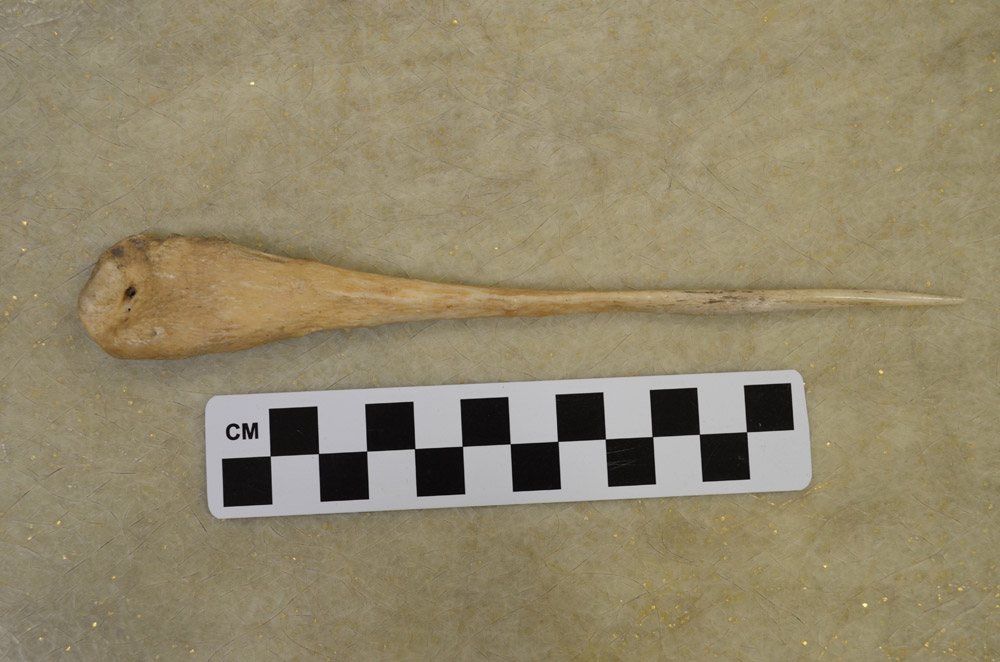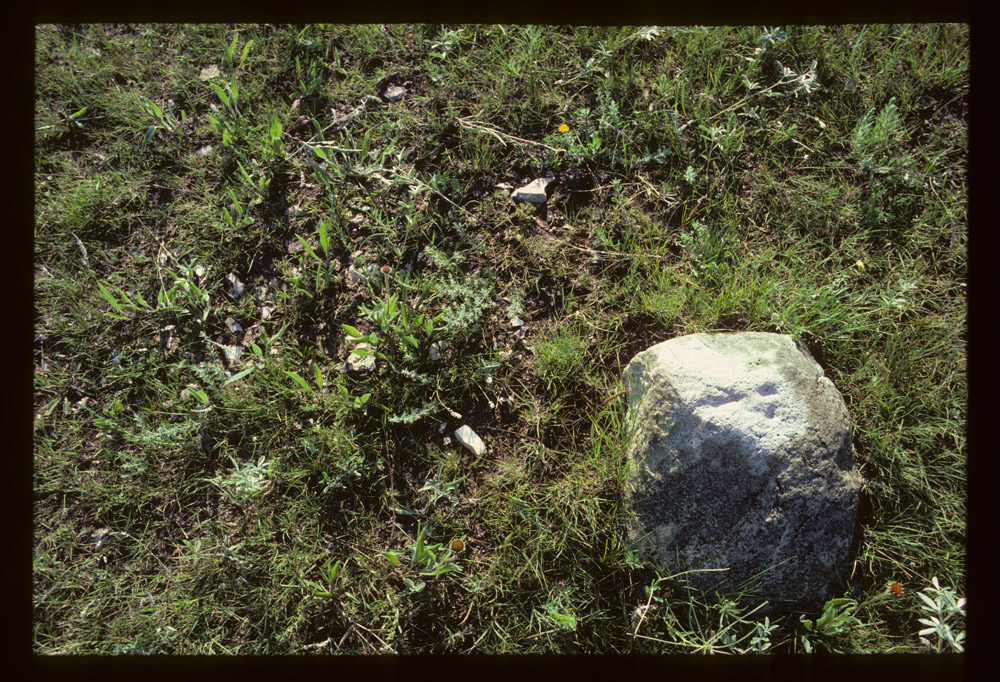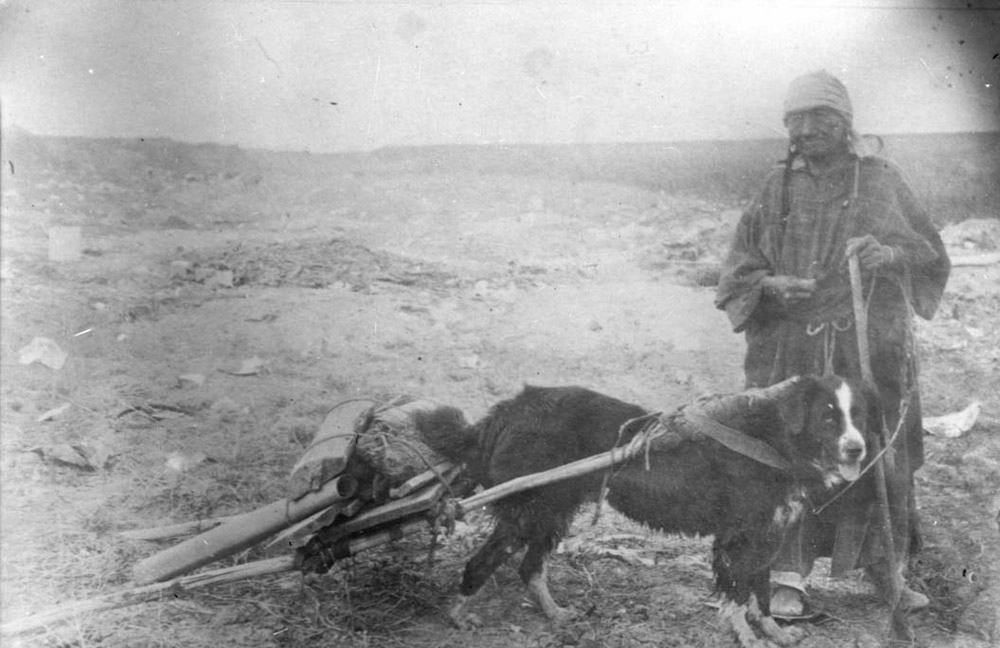Lake IloToday, Lake Ilo (http://www.fws.gov/lakeilo) is a National Wildlife Refuge that provides a resting spot for migratory ducks. A dam was built in the 1930s where Spring Creek and Murphy Creek meet. The lake provided a stable water supply for residents of the area. Fifty years later, one of the dams weakened. The lake was drained in 1989 to repair the dam. The empty lake bed revealed a stone circle that was constructed by People thousands of years ago. Further archaeological surveys revealed 13 prehistoric archaeological sites. The oldest site was visited by Folsom People. People visited Lake Ilo off and on for more than 11,000 years. Because Lake Ilo was occupied for such a long time and remains relatively undisturbed, it is one of the most important archaeological sites in North Dakota. did not exist 11,000 years ago. It was not even a lake; it was just a low spot between Spring Creek and Murphy Creek in Dunn County. It was a nice place to settle down for a few weeks. For convenience sake, we will call the place by its modern name, Lake Ilo (EYE low).
Lake Ilo was a favorite spot for People to visit or live from Folsom times to the present. Of course, during the past 11,000 years, the cultures of the People who came to Lake Ilo changed a lot. People adapted to changes in the climate. As the climate changed, so did the plants and animals of the region. People adapted by building different styles of sheltersArchaeologists have found places where the people built fires (hearths), but housing was temporary, so there is no evidence of house structures remaining at Lake Ilo. Usually People came to Lake Ilo to mine flint, so they lived in temporary shelters in a camp. and making different kinds of tools. People also learned new techniques in making tools from People they met and traded with.

As the environment changed, so did the way the People organized their families and communities. The earliest People probably lived in small groups of a few families. There were enough people to hunt large animals, but not too many people to feed. Over time, as the hunters developed more efficient weapons, the groups of people grew larger, more like a village. It was easier to hunt and to feed more people with a weapon as efficient as a bow and arrow.
People probably did not spend more than a few weeks at Lake Ilo. Families camped along the banks of Spring Creek long enough to remove Knife River Flint from the nearby quarries and turn the flint into knives, points, scrapers, and other tools. The People also used other stones including petrified wood from Rainy Butte (80 miles southwest), porcellanite from the Little Missouri River, and obsidian from Idaho to make tools.
While they were camped at Spring Creek, some of the People (probably the women) gathered plants for food and medicine. If it was late summer, they would have gathered berries, plums, and other fruits. They probably dried some of the fruits to add nutrition to their winter meals.
Of course, People hunted, too. If there were bison nearby, they would have organized a big hunt to get as much meat as they could process. If winter was coming they would have dried the meat to store for winter use. People also hunted smaller game such as deer, rabbits, birds, and fish.
People also made bone tools at Lake Ilo. Bones and antlers were used to shape Knife River Flint into points. Bones could also be broken and then sharpened into scraping tools, knives, and awls. (See Image 1.) When People broke animal bones, they took the marrow from the center of the bone to use for food.

There are bits of shells at Lake Ilo indicating that People harvested mussels from the nearby streams. Some shells came from the Atlantic or Pacific Ocean indicating that People engaged in very widespread trade patterns. Shells were often made into decorative objects such as necklaces or hair decorations.
Around 100 B.C., some People who visited Lake Ilo made clay pots. Only one piece of broken pottery has been recovered at Lake Ilo. People who came here did not intend to stay long, so we can assume that either they did not bring pottery with them on this trip to the stone quarries, or they did not make or use a much pottery.
People camped at Lake Ilo for thousands of years because it was near the Knife River Flint quarries. These quarries were used for thousands of years because Knife River Flint has excellent qualities for knapping blades and projectile points. Knife River Flint was highly valued as a trade item. People who quarried Knife River Flint traded the flint to People who took it to distant places such as western New York and Alberta, Canada.

People walked to the quarries (there were no horses in those days) where they picked out large stones that would make good tools. Knife River Flint cracks like glass, so People cracked large pieces of flint on granite rocks that they used as anvils. (See Image 2.) From the pieces of flint, People chose suitable blanks which they would later refine into tools. Then, the People carried the blanks back to camp. If they had dogs, they might use the dogs to carry part of the load. (See Image 3.)
For more than 11,000 years, life went on at Lake Ilo. People camped near the stream where they could find water, then went to the quarries for flint. They made tools and hunted. They raised their children and taught them to hunt and make stone and bone tools and weapons. They met other People and traded. They learned new techniques. They adapted as necessary while continuing to find uses for the resources they found near this camping spot. They returned often because Lake Ilo offered them everything they needed to live in the good ways of the People.
Why is this important? Lake Ilo is one of the most important archaeological sites in North Dakota. Archaeologists have found evidence of continual occupation for thousands of years which helps us understand how cultures changed. It also helps us to understand how technologies changed and how the People adapted to new information and new environmental conditions. The message from Lake Ilo seems to be that the key to success is change and adaptation.


